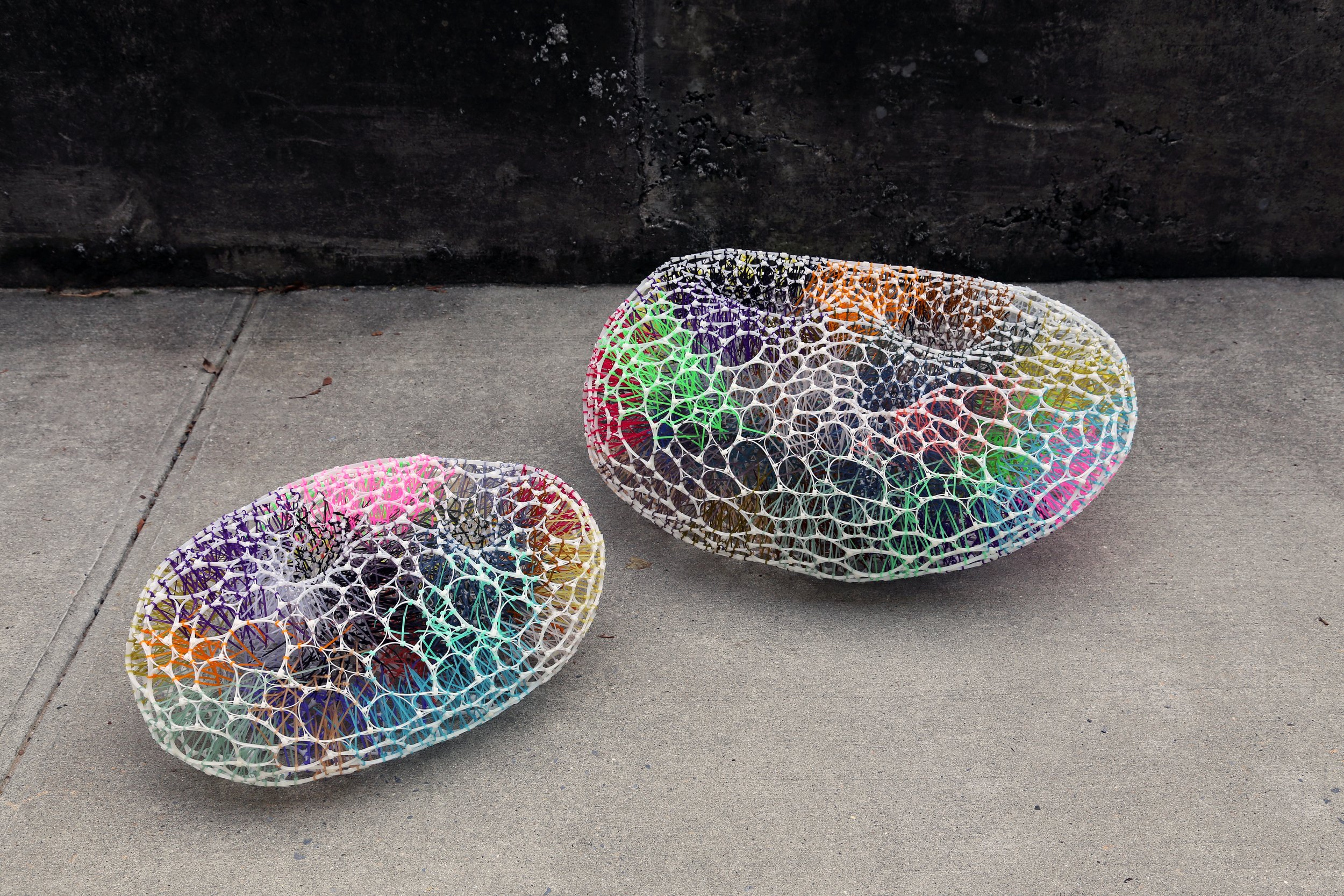Sui Park:
Weaving Colors Into Cosmos
Curated by Barbara Stehle Ph.D.
October 12, 2023 - November 27, 2023
Opening October 12, 6-8 pm
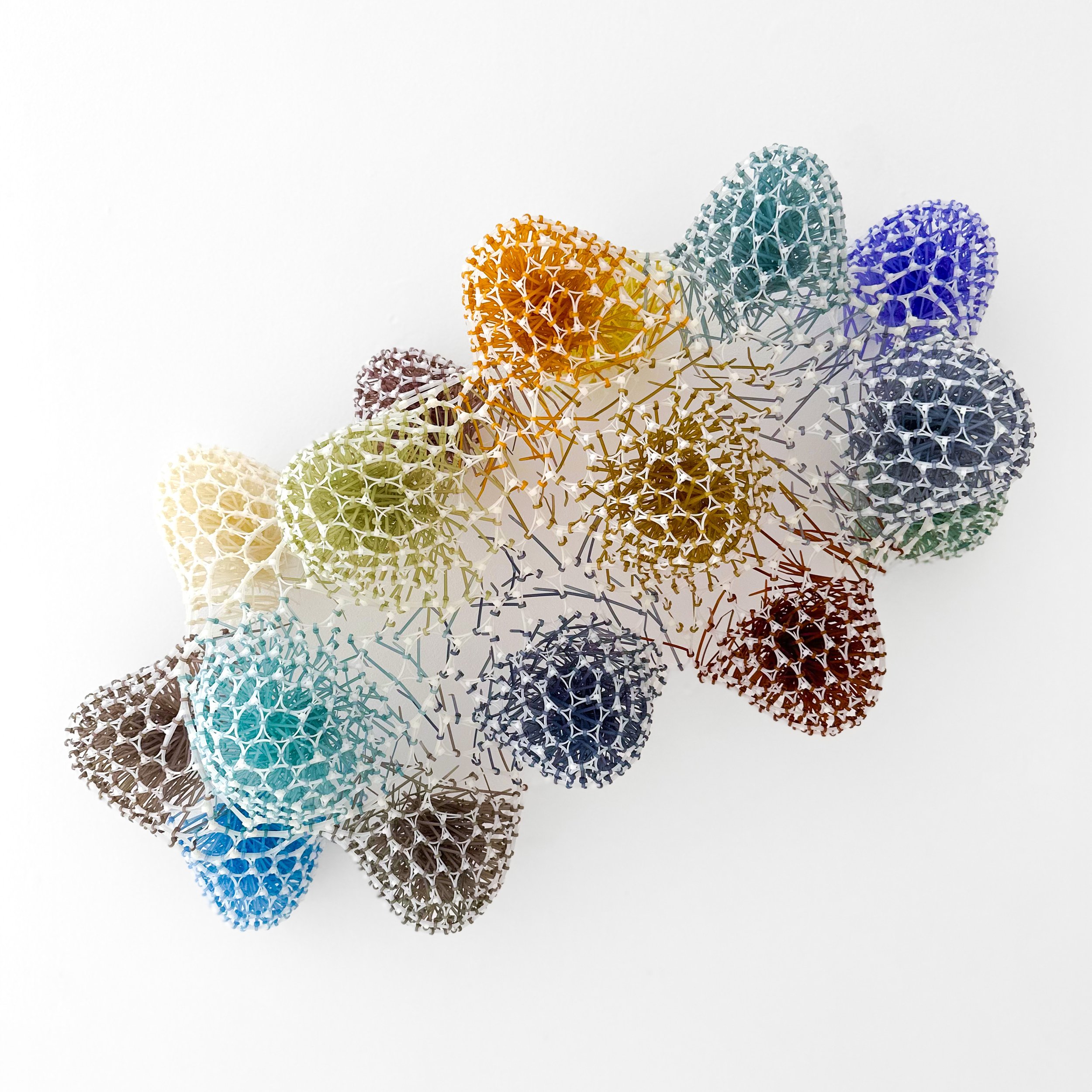
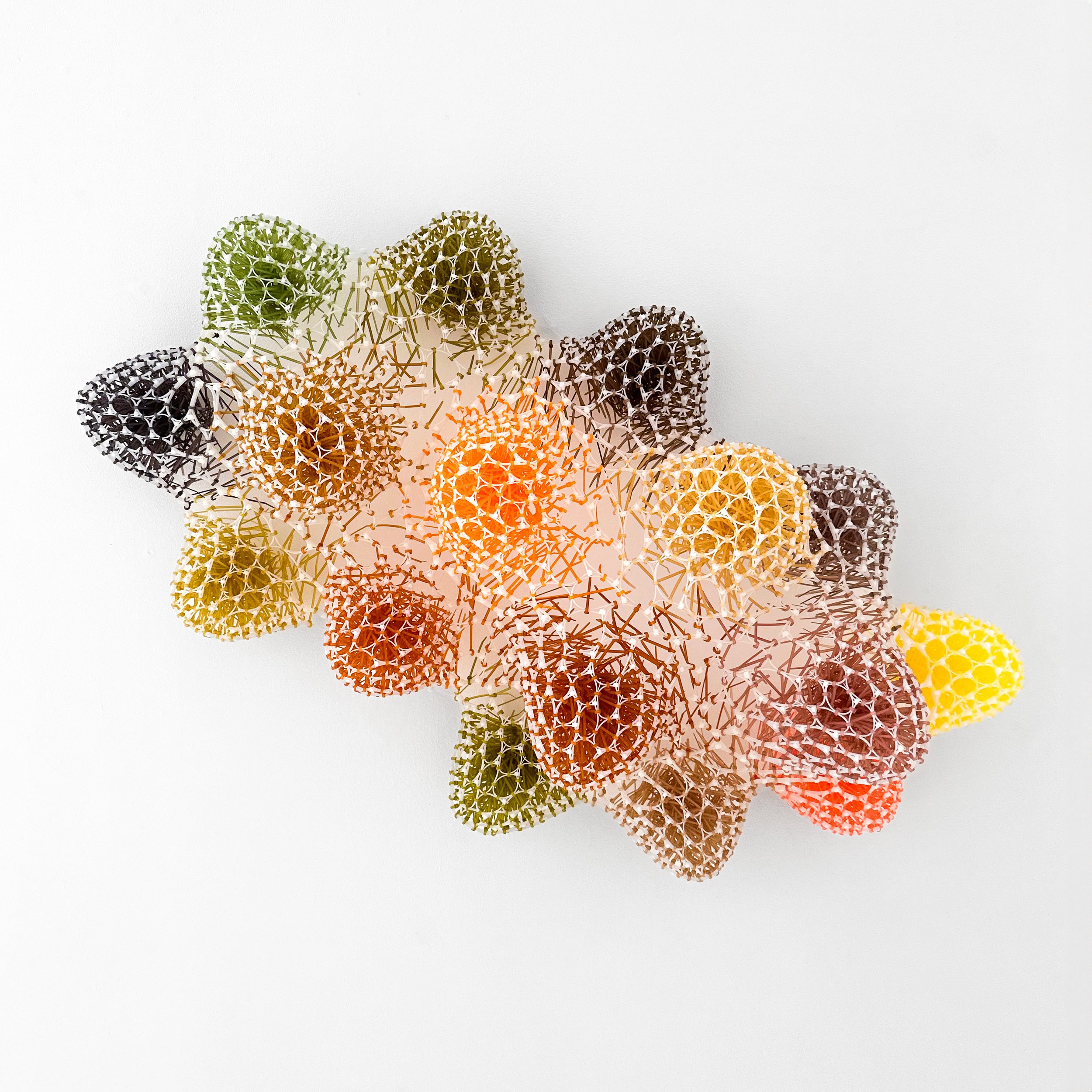
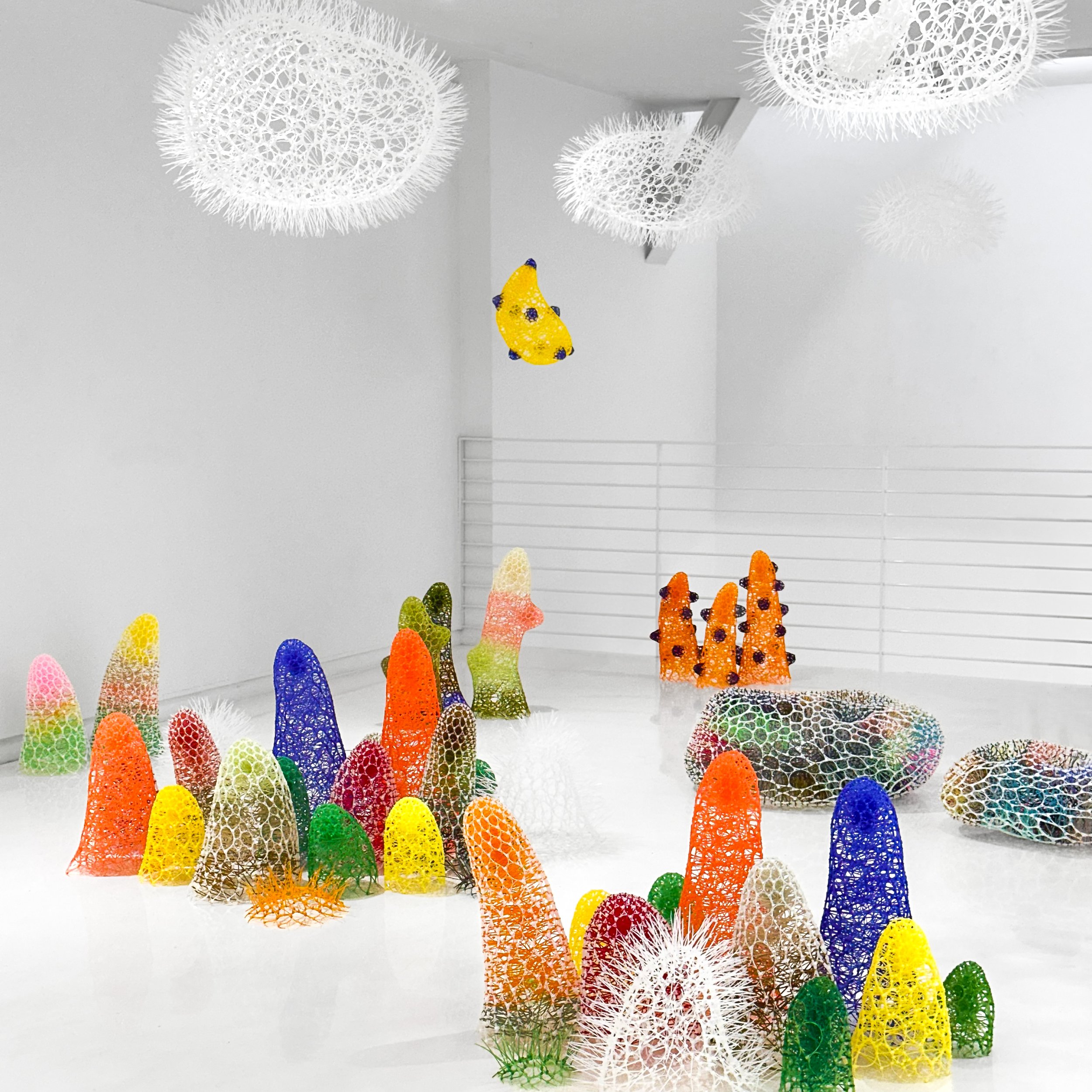
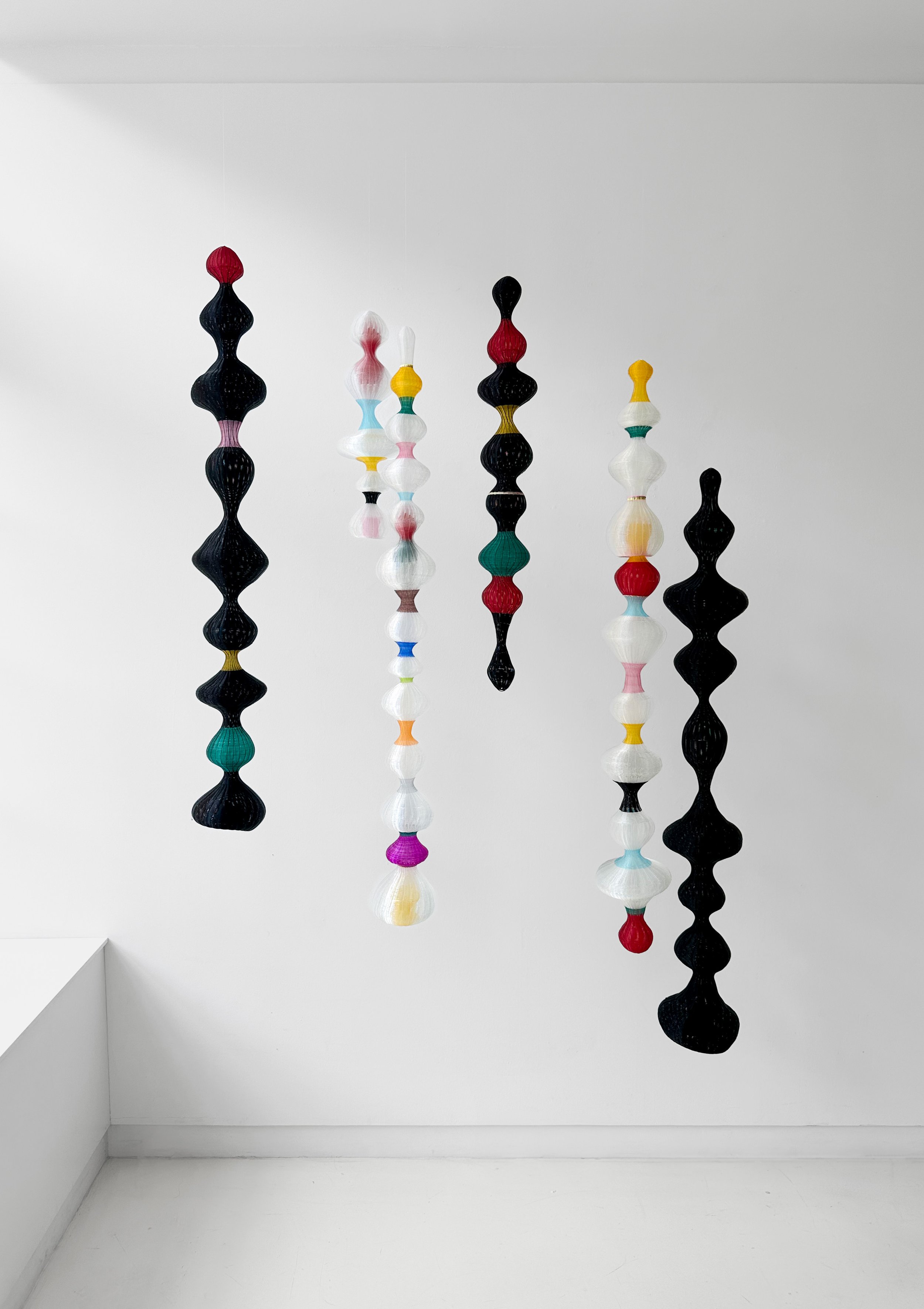
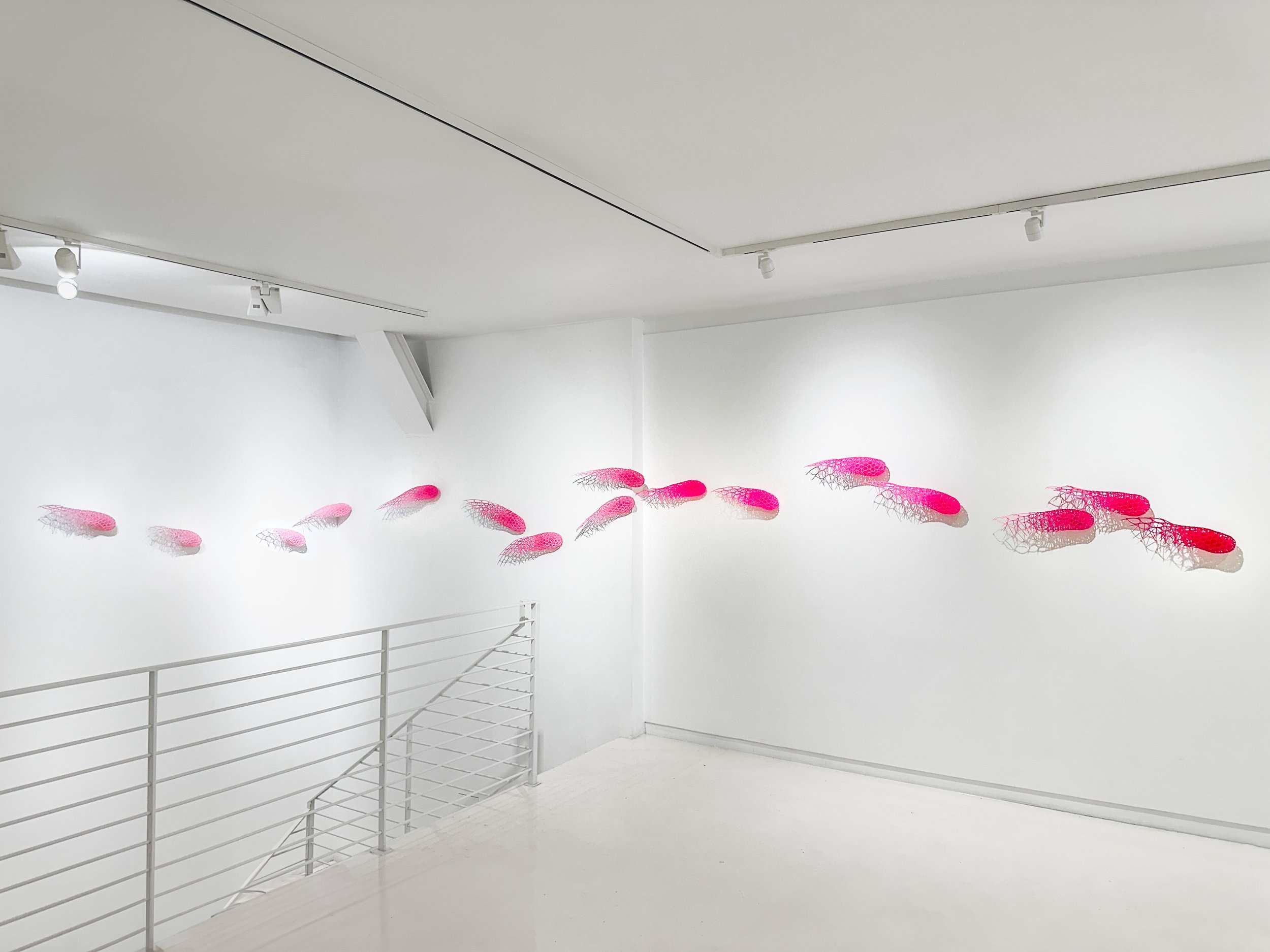
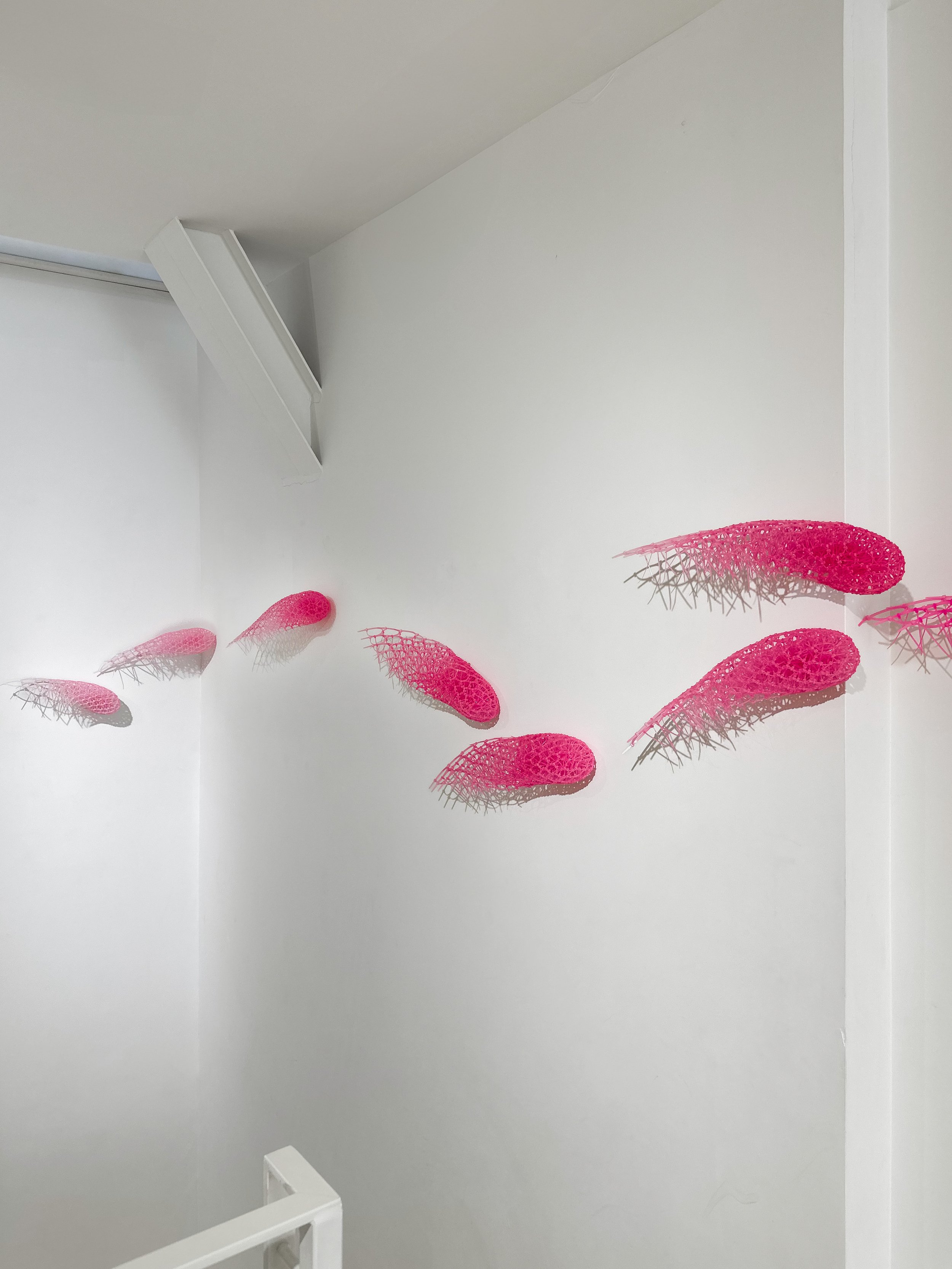

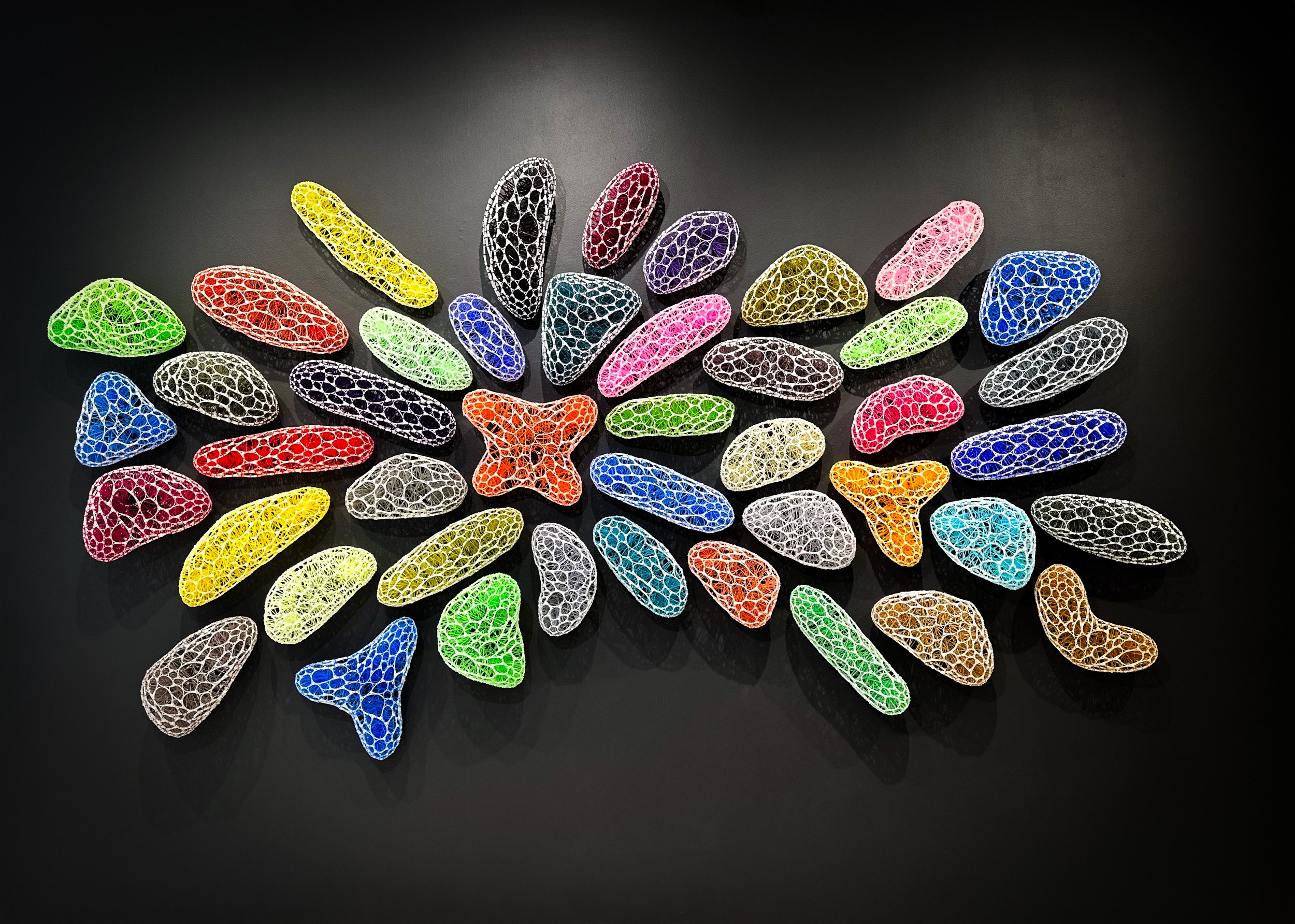
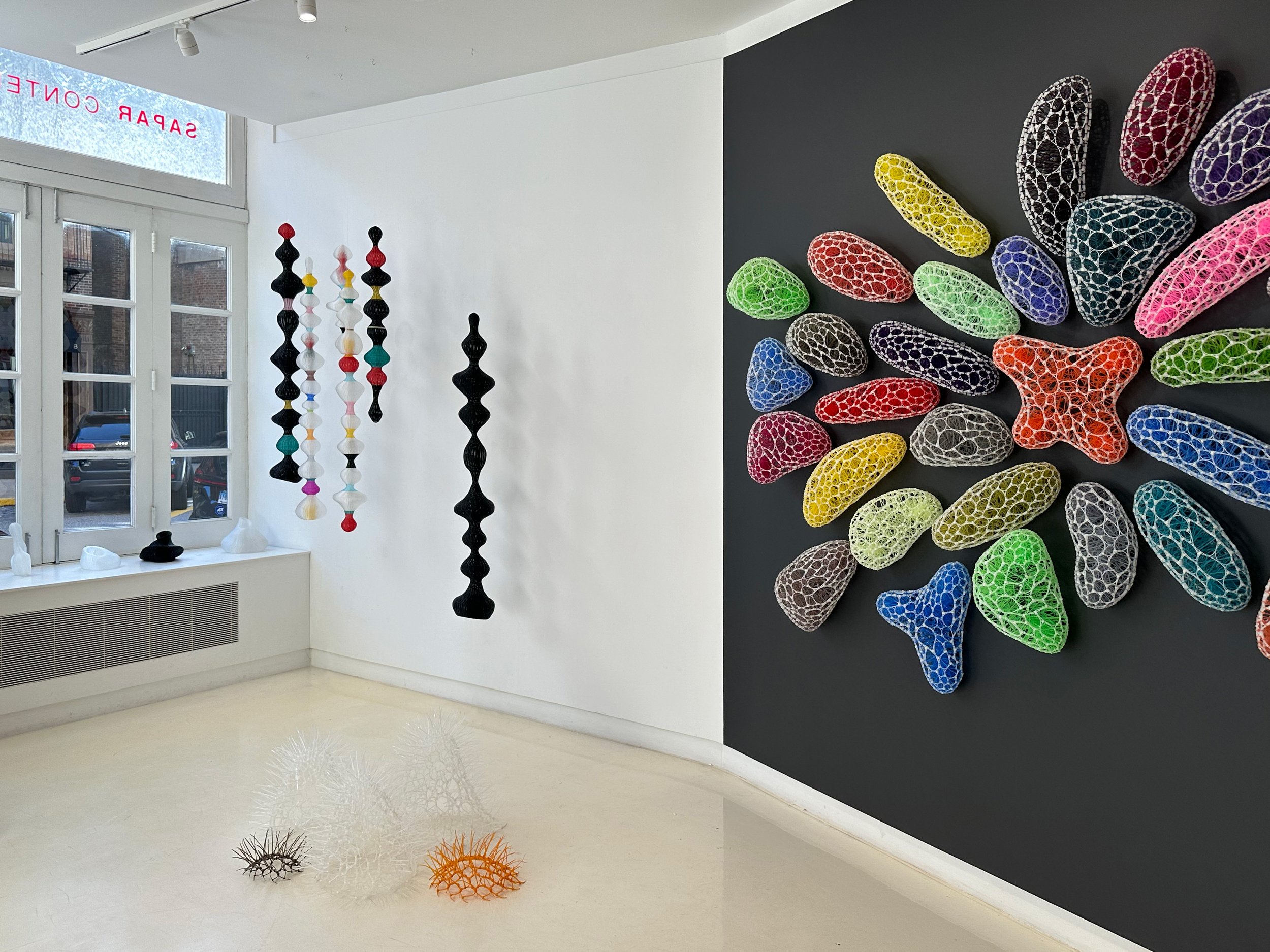
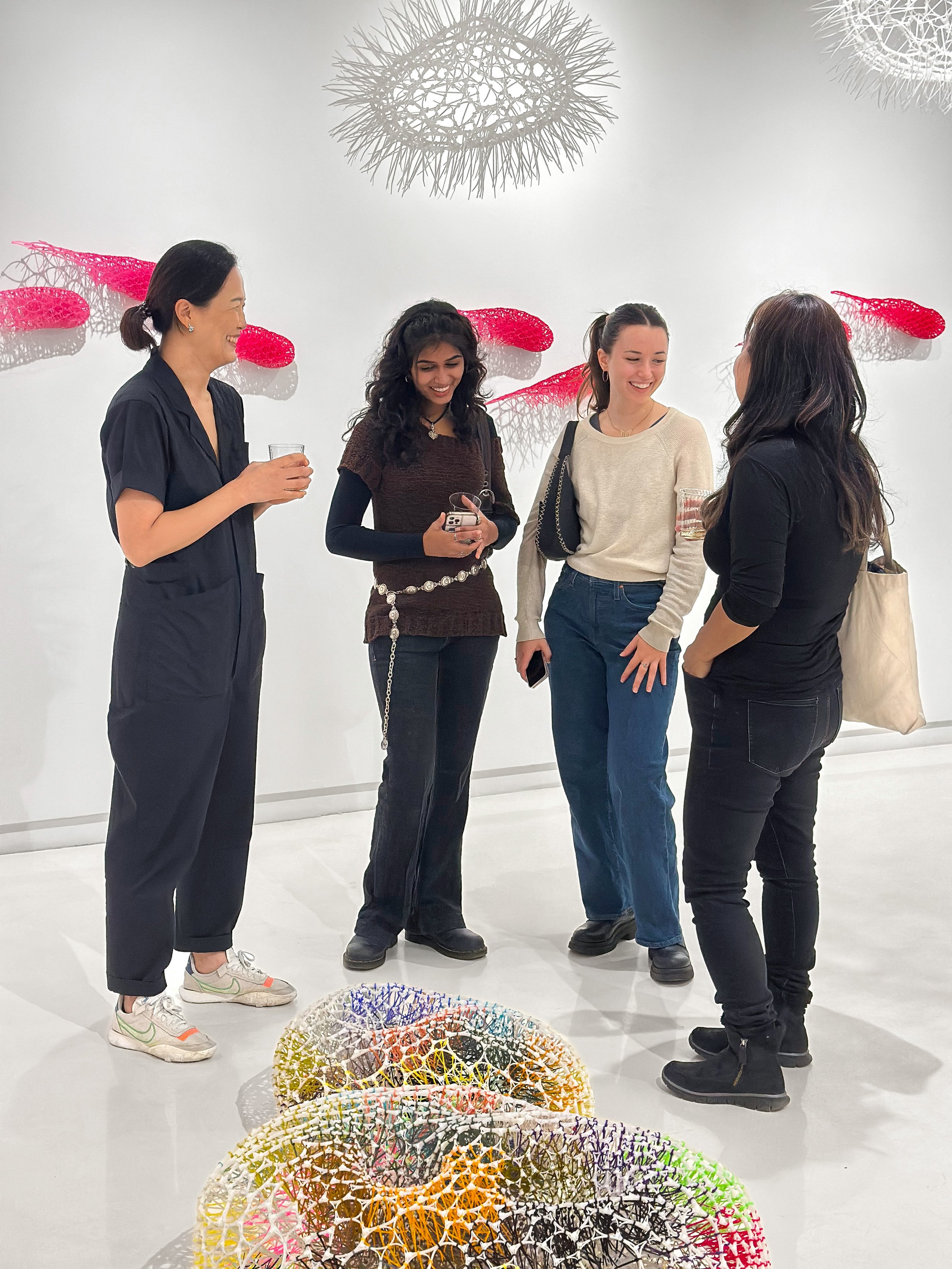
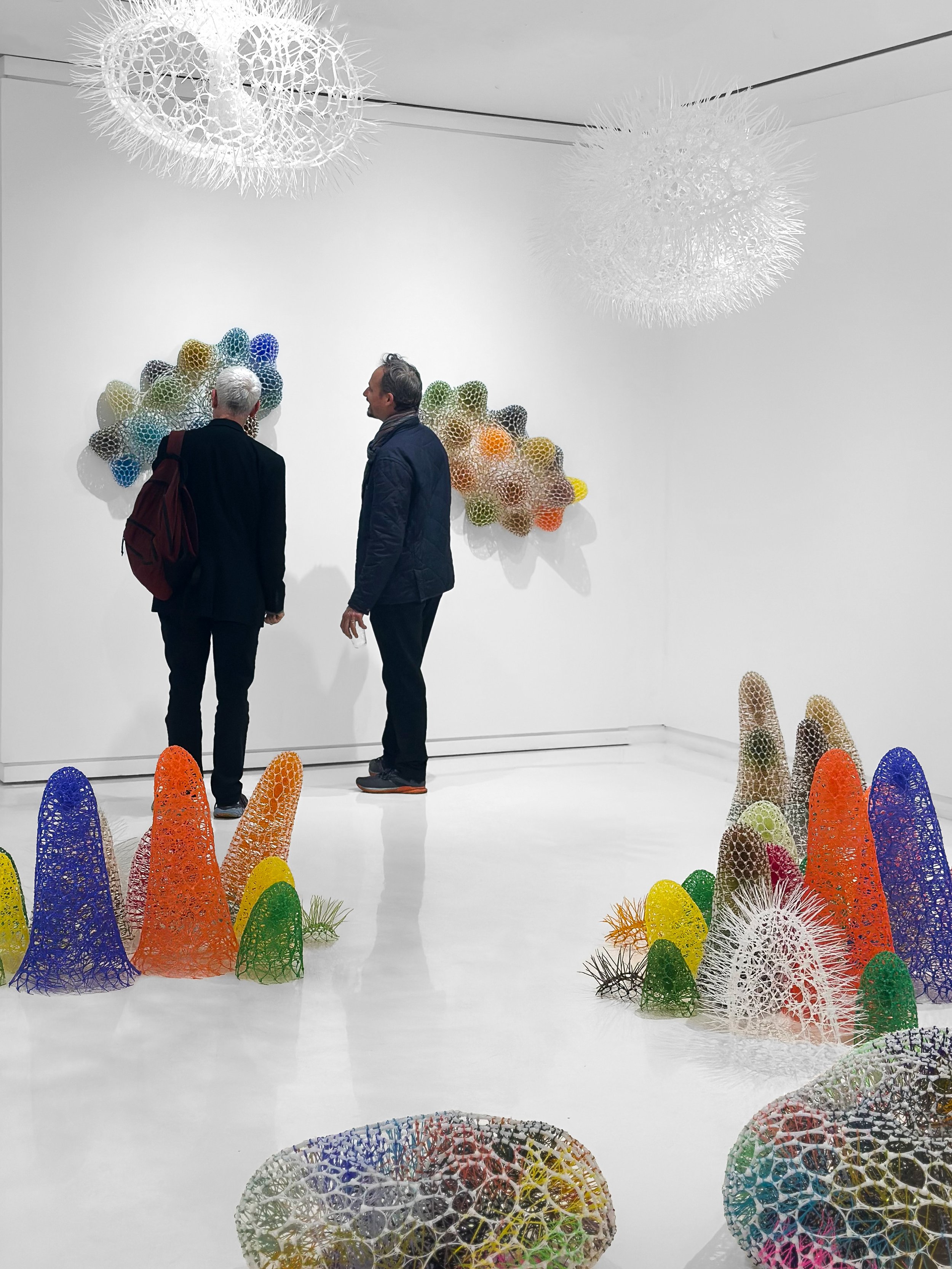
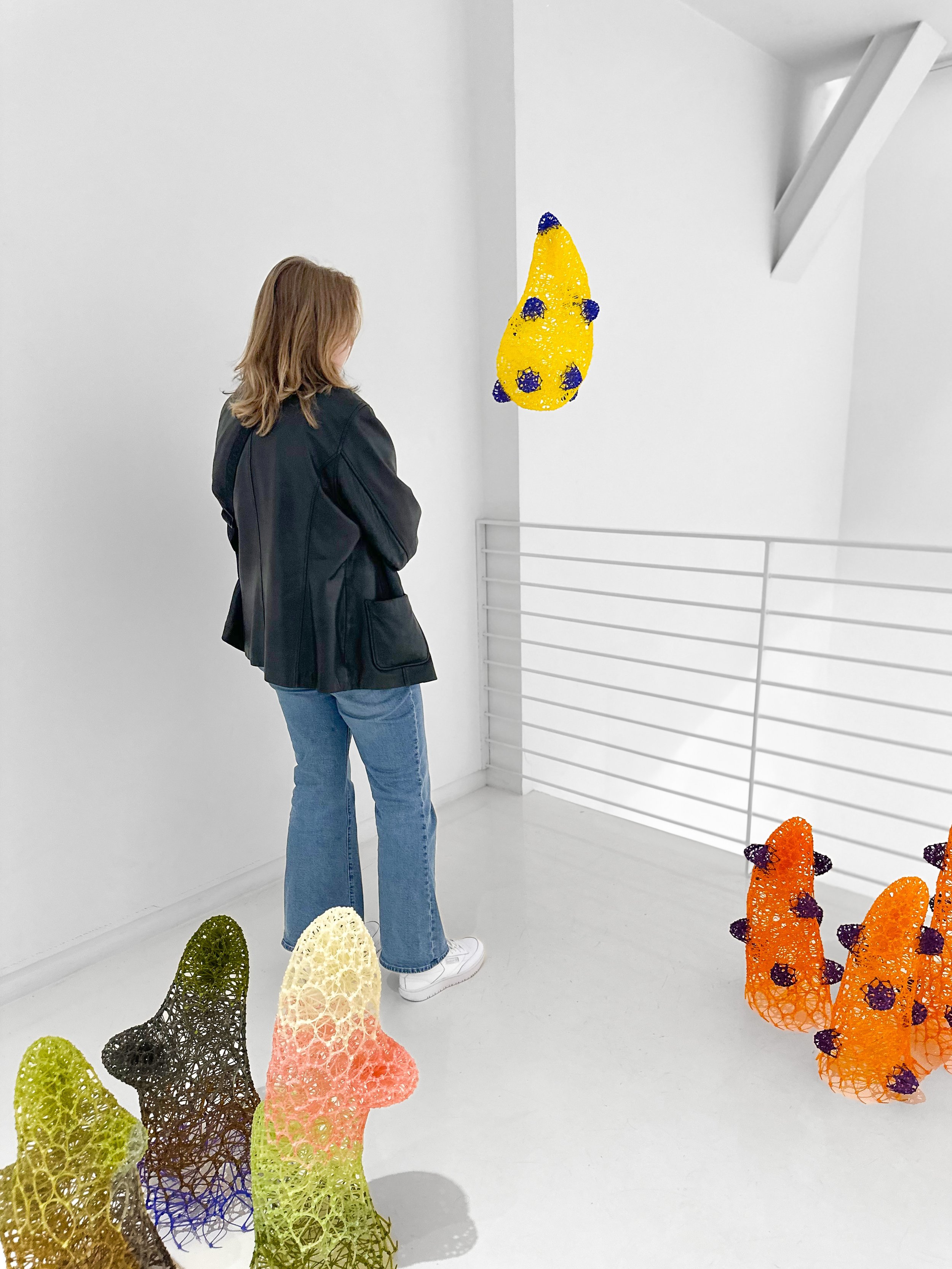
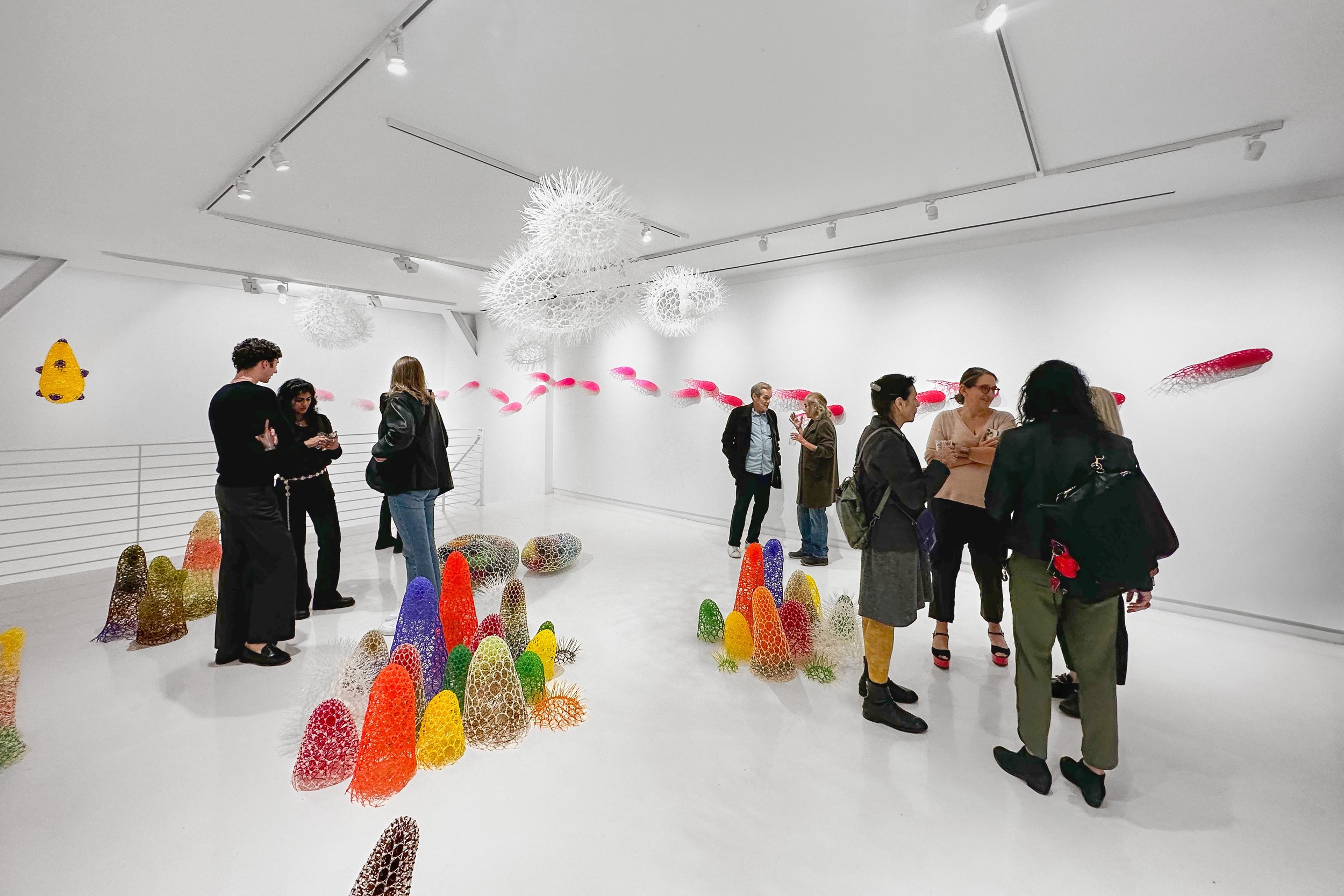
Sapar Contemporary is proud to present a solo exhibition of Korean American artist Sui Park curated by Barbara Stehle, Ph.D. This show will coincide with an outdoor installation at Bella Abzug Park. Sui Park’s biomorphic sculptures transform their environment; their effect is similar to the blooms of spring in a garden. They change everything. Her oneiric spirit brightens the mood, calls on fantasy and joy. Trained both as an architect and in the ancient art of Korean basketry, Park is a crafter of shapes and creator of space. With simple means and an original technique, she creates colorful soft sculptures. Her polymorphic creations form a mesmerizing world. Sui Park, a mother of two, seems to never have lost her powers to dream and invent as children do. She feels at times like a magician, turning the ordinary into extraordinary.
Sui Park’s world of wonder and surprises inspires questioning and awe. What is it that we are seeing? How is it made? The artist has spent a decade working with monofilament yarns and cable ties to create organic like forms. Monofilament are often used for medical purpose or for fishing, cable ties for bundling things. Park buys them from industrial production and repurposes them for her own aim. Like Tara Donovan, Sui Park is attracted to ready-made contemporary materials which offer resilience and transformative potential.
Outside of black or white, the color in Park’s work are her own creation. Park dyes her lines and zips in multiple shades. Her palette has many moods, her colors glow, spark, bloom. Park weaves color gradient, composes within one hue, or combines them. At times spunky, others tender, her palette evokes different energies. For “Molecules” or “Sprinkle” she used a black or white shell to capture the interactions of multiple colors. Park is a great colorist, she knows how to sharpen color encounters or to the contrary how to soften them. Color dynamics and development range greatly in each series. Park ventures in complex alliances and defines subtle transitions. The artist experiments with color the way she does with form.
Sui Park has authored a language that is very much her own. Each year her vocabulary expands the reach of her monofilament and interlocked cables. If her technique is new, her manual practice is as old as time. It demands patience and rigor. Some see her as a new type of textile artist as her knowledge of line is similar to the one of netmakers and weavers. Park experiments to discover all that her line can offer. Her dexterous fingers knot and bend to create a weave that is architectural enough to be self-supporting. Her understanding of her material — a plastic line — is akin to the one modernist trailblazers like Ruth Asawa and Gego had for their own — a metal line. Like them, she is extending our notion of what a line an do, what a drawing is, and how close it can be to a sculpture.
Both Park choices of monofilament and ties have a linear shape. This characteristic is fundamental to understanding her work. The line, as opposed to stone or bronze mass, defines these objects as drawing in space. Their shadows are full of expression, casting negative and positive compositions on the walls. Sui explores all possibilities for their surface to play with light and space. Lightweight, soft and flexible, the sculptures can occupy space at the artist’s whims. Sui explores all possibilities for their surface to play with light and space. Like most most polymer, Park’s sculptures are almost indestructible. Redirecting ecological anxiety, the artist uses the material not to pollute but to defy time with the beauty of the immersive environment she creates.
Sometimes it looks like Sui Park is creating new subaquatic creatures, cousins of sea urchins and jelly fish. Other times, her sculptures look mineral, like rock formations or crystals. The artist has a capacity to invent bodily structures that look molecular and full of life. Working in series, she creates groupings of sculptures that resemble each other like members of a specie. “Flow” proposes fast moving creatures traveling along walls. Each body of work has its own motion and behavioral logic. Some sprout out of the ground and journey slowly. Others dangle in congregations. Often it seems that their ranks could grow, that others could join.
I am always amazed to see how Sui Park’s sculpture can softly integrate any space. Their capacity to find themselves at ease in different settings is striking. With her intelligence of space Park has developed pieces that can wrap around columns, crawl the floor, climb trees, hang like clouds. Park has installed them in botanical settings, forests, shores, but also in streets, rooftops and rooms. Each time the work merges with the elements. It belongs naturally.
Sui Park takes over space with an inimitable sense of joy and poetry. The artist uses colors and shapes to reorient the mood in any direction she wishes. She influences our perception and emotions. There is so much potential in her world making, so many tales she could set with her weaving. I saw her at her beginnings and never wanted to lose track of what was to come next. Park is a magician, and like all of them, she is enchanting and mighty.
Colossal Article by Grace Ebert: Otherworldly Zip-Tie Sculptures by Sui Park Crawl Across Galleries and Sprout in City Parks
About Curator
Barbara Stehle, Ph.D. is an art historian and independent curator. She worked at the Pompidou Center in Paris before moving to the US. Stehle has given a Tedx talk about “Architecture as Human Narrative” and writes about Art, Architecture and Women’s contribution to the art historical field. She is the author of many catalog and monograph essays as well as academic and international press articles. She teaches at the Rhode Island School of Design. Her exhibitions were reviewed in the New York Times and Art Forum amongst other publications.
About Artist
Sui Park is a New York based artist born in Seoul, Korea. Her work involves creating 3-dimensional flexible organic forms of a comfortable ambiance that are yet dynamic and possibly mystical or illusionary. Park has had several solo exhibitions and public art commissions including Immersion in Black and White at Sapar Contemporary in 2021, Pompom in Georgetown, Washington D.C. in 2019 and Floating Imagery at the Pelham Art Center, Pelham, New York in 2018. She participated in over 150 exhibitions internationally, including The 5th Textile Art of Today at Danubiana Meulensteen Art Museum in Bratislava, Slovak republic where she received the Excellent Award in September 2018. Park’s artwork has been acquired by numerous places including Jordan Schnitzer Museum of Art in Oregon and the City Harvest Food Rescue Center in Brooklyn, NY. Numerous mentions of her work and projects have been published in The New York Times, The Washington Post, Hyperallergic, Artnet, Vice and Colossal as well as other publications.
Sui Park’s education includes an MDes in Interior Architecture at Rhode Island School of Design and BFA in Environmental Design at Maryland Institute College of Art. Sui Park also holds an MFA and BFA in Fiber Arts at Ewha Womans University, Seoul, Korea.

